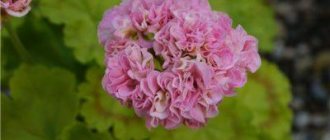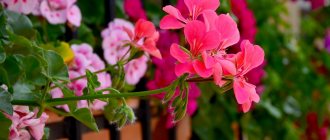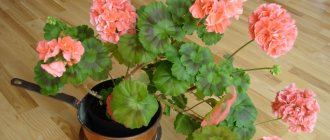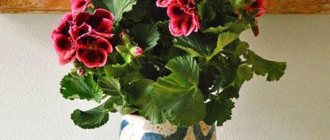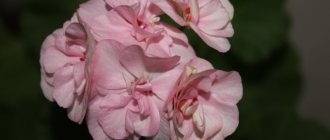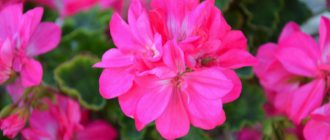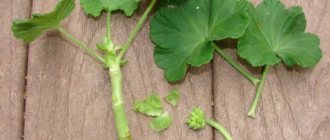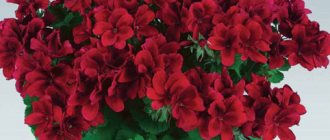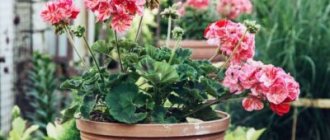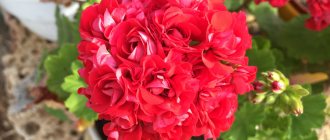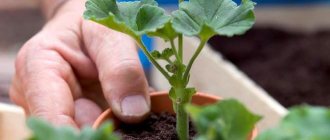Pelargoniums have won the love of many gardeners. Luxurious decorative flowers with a delicate aroma transform any room. Thanks to the efforts of breeders, the range of crop varieties is constantly expanding. The variety of shades and shapes makes it possible for everyone to find a plant to their liking. One of the popular groups is the South Pelargonium. Let's consider the characteristics and features of growing these flowers.
general description
Pelargoniums are part of the Geranium family. It unites several hundred plant species. These are both subshrubs and herbaceous specimens. Only a few types of pelargonium are grown at home. But even so, the choice is very wide.
Flowers have a variety of colors. They form small or large inflorescences in the form of umbrellas. White, soft and bright pink, red, burgundy, purple and other expressive tones leave no one indifferent. The colors can be either monochromatic or combined. The leaves are simple but beautiful. They are usually green, but there are other options, including variegated ones. Plants are perennial.
Pelargoniums of the YUG series are the creations of the wonderful breeder Yulia Gonchar from the Voronezh region. Actually, the large letters in the names of the varieties actually mean the initials of the creator. All varieties bred by Julia bloom readily and profusely. The bushes are usually compact and fluffy. The exception is YUG-Shukar, which is of average height and requires shaping.
Varieties
The group includes an impressive number of varieties. Let's look at the most popular of them in more detail.
- SOUTH-Shukar. This is a zonal variety. The dimensions of the plant are standard. To give the bush a decorative shape, it should be trimmed regularly. Inflorescences are located on all sides. Flowers can be regular or double. The rich cherry-scarlet color of the petals makes the plant very impressive. The foliage is dark green.
- SOUTH-Jadwiga . Bright pink large flowers form lush caps of inflorescences. The bush is strong and compact. It does not require formation, it grows cute and very neat. The leaves are green, ordinary.
- SOUTH-Sakura . This variety received this name because the voluminous double flowers of delicate colors really resemble the culture of the same name. The petals are colored light pink. Crimson rays radiate from the center of the flower, giving it even greater expressiveness. The foliage is medium green, dense, without zonation. The edges of the leaves are framed by small teeth.
- SOUTH-Varvara is beautiful. This is an adorable dwarf. The bush is dense and has a beautiful regular shape. No pruning required. Blooming double buds resemble roses or mini-peonies. The light pink monochromatic color of the petals becomes brighter in the light. Abundant and long flowering pleases the gardener with lush inflorescences reminiscent of bridal bouquets.
- SOUTH-Zlatoslava. A very bright dwarf variety. The dense green foliage with a golden tint is beautiful in itself. Wavy purple-pink flowers complete the look, making the plant a worthy addition to any room.
- SOUTH-Claudia. White and pink fluffy flower caps decorate a compact bush with rich green leaves. The plant does not require formation. The variety is very popular among romantic representatives of the fair sex who are interested in floriculture.
- SOUTH-Princess Grace. It is no coincidence that the royal name was given to this variety. This luxurious pelargonium will become a real star in the collection of any gardener. The plant resembles a rose bush. Rough green leaves and large buds, shaped like a rose when opened, attract the eye. The shade of the petals is soft pink with tints.
- SOUTH-Nina. Another embodiment of tenderness. This magnificent rosebud has golden foliage. Each leaf has an ornate brown border. Densely double flowers have a pale pink color with a soft purple tint. Flowering is abundant. The bush is neat and forms itself. Stems and peduncles point upward. Growth type: dwarf. The variety received its name in honor of Yulia’s grandmother.
dconst60 (5)
|
0
photo
|
1
two girls under the window...
| two girls under the window... |
0
two girls under the window...
| this is such a miracle... |
0
this is such a miracle...
| gorgeous… |
0
gorgeous…
Svetlana (11)
|
0
Pelargonium stellata Kitbridge
| Patricia Andrea. |
0
Patricia Andrea.
| photo |
1
photo
| photo |
1
photo
| photo |
3
photo
| photo |
2
photo
|
3
photo
| photo |
0
photo
| photo |
0
photo
| photo |
1
photo
| photo |
0
photo
Dana (1)
| photo |
0
photo
Arina (1)
| Pelargonium zonal |
0
Pelargonium zonal
Vasilina (9)
| My cheerful windowsill |
1
My cheerful windowsill
|
0
photo
| photo |
0
photo
| photo |
0
photo
|
0
Elegance ballet
| Patricia |
1
Patricia
| Burghi |
0
Burghi
| Bermuda pink |
0
Bermuda pink
| Pelargonium Elegance tony |
1
Pelargonium Elegance tony
Yulia Sergeevna (2)
| Pelargonium Americana Rose Mega Splash |
1
Pelargonium Americana Rose Mega Splash
|
1
Zonal pelargonium Passat
Elena Alekseevna Lebed (1)
| photo |
0
photo
Elena (3)
|
0
Royal
|
1
Angel
|
0
Royal
Nelya ginyatullina (1)
| miniature pelargonium Mini Diane |
0
miniature pelargonium Mini Diane
Julia (6)
| photo |
0
photo
| photo |
0
photo
| photo |
0
photo
| photo |
0
photo
| photo |
0
photo
|
0
photo
Anna (4)
| Royal geranium |
0
Royal geranium
|
1
photo
|
1
photo
| My favorites |
1
My favorites
Alena (2)
|
0
photo
| photo |
0
photo
Elena Nikolaevna (4)
| ivy-leaved, ice rose, |
0
ivy-leaved, ice rose,
|
0
red rosebud
|
0
tulip-shaped
| my blooming favorite appleblossom rosebud |
4
my blooming favorite appleblossom rosebud
Lyudmila-Kirov (18)
| 13. Apple Blossom Rosebud |
2
13. Apple Blossom Rosebud
| photo |
3
photo
| photo |
3
photo
| 32. ivy-leaved rosebud PAC Purple Sybil |
3
32. ivy-leaved rosebud PAC Purple Sybil
| 31. ivy terry PAC Mexica Ruby |
4
31. ivy terry PAC Mexica Ruby
| photo |
3
photo
|
3
23. Royal Mandarin
| 22. royal Fabiola |
2
22. royal Fabiola
| 21. Royal Wien |
2
21. Royal Wien
| 5. zonal with brown leaves Night Rose |
2
5. zonal with brown leaves Night Rose
| 4. zonal terry Pac Blanca |
0
4. zonal terry Pac Blanca
|
0
photo
| photo |
0
photo
| Baby - there are fewer leaves than flowers |
6
Baby - there are fewer leaves than flowers
|
6
Zonal
| Knight Rose |
2
Knight Rose
| Night Rose - brown leaves |
3
Night Rose - brown leaves
| Zonal. Composition with header |
4
Zonal. Composition with header
Irina Nikolaevna (1)
| photo |
0
photo
Maria Larionova (33)
| photo |
1
photo
| photo |
1
photo
| photo |
1
photo
| photo |
1
photo
| photo |
2
photo
| photo |
1
photo
| photo |
2
photo
| photo |
0
photo
| photo |
0
photo
| photo |
3
photo
| photo |
2
photo
| photo |
0
photo
|
0
photo
| photo |
0
photo
| photo |
0
photo
|
0
photo
| photo |
1
photo
| photo |
1
photo
| photo |
1
photo
|
3
photo
| Cherry |
3
Cherry
| Pac Rosecrystal |
1
Pac Rosecrystal
|
1
Pac Harmony
|
0
Saxdalens Selma
|
1
photo
| Olivia queen |
1
Olivia queen
| photo |
1
photo
| Saxdalens Selma |
1
Saxdalens Selma
| photo |
2
photo
| photo |
2
photo
| photo |
3
photo
| photo |
2
photo
|
3
Royal Raspberry Suprise
Marina Lisyanskaya (5)
|
1
photo
|
2
photo
| photo |
1
photo
| photo |
1
photo
| photo |
1
photo
galina (1)
|
2
photo
FloraHolland (1)
|
2
Pelargonium grandiflora (Bella Donna)
Galina (4)
|
3
Pelargonium ivy-leaved
| Pelargonium |
0
Pelargonium
| Pelargonium Apple blossom |
1
Pelargonium Apple blossom
| Pelargonium Salmon Night |
0
Pelargonium Salmon Night
Wolfschmidt (29)
|
3
Pelargonium ivy-leaved (Wico)
| Pelargonium ivy (Ville de Paris Rot) |
1
Pelargonium ivy (Ville de Paris Rot)
| Pelargonium ivy (Ville de Paris Rosa) |
1
Pelargonium ivy (Ville de Paris Rosa)
| Pelargonium ivy (Ville de Paris Lila) |
2
Pelargonium ivy (Ville de Paris Lila)
| Pelargonium ivy (Ville de Paris Bicolor) |
1
Pelargonium ivy (Ville de Paris Bicolor)
|
2
Pelargonium ivy (Ville de Dresden)
| Pelargonium ivy (Vicky) |
3
Pelargonium ivy (Vicky)
| Pelargonium ivy-leaved (Tommy) |
5
Pelargonium ivy-leaved (Tommy)
| Pelargonium ivy (Tom Girl) |
2
Pelargonium ivy (Tom Girl)
| Pelargonium ivy (Scarletit) |
1
Pelargonium ivy (Scarletit)
| Pelargonium ivy (Ruby) |
2
Pelargonium ivy (Ruby)
|
1
Pelargonium ivy (Ricky)
| Pelargonium ivy (Red Sybil) |
1
Pelargonium ivy (Red Sybil)
|
2
Pelargonium ivy (Purple Sybil)
|
1
Pelargonium ivy (Pink Sybil)
|
1
Pelargonium ivy (Nealit)
| Pelargonium ivy (Mexica Tomcat) |
7
Pelargonium ivy (Mexica Tomcat)
| Pelargonium ivy (Mexica granatit) |
3
Pelargonium ivy (Mexica granatit)
| Pelargonium ivy (Lilac) |
4
Pelargonium ivy (Lilac)
|
2
Pelargonium ivy (Happy Face Velvet Red)
|
2
Pelargonium ivy (Happy Face Scarlette)
|
2
Pelargonium ivy (Happy Face Purple Red)
| Pelargonium ivy (Happy Face Ametist) |
1
Pelargonium ivy (Happy Face Ametist)
| Pelargonium ivy (Granatit) |
3
Pelargonium ivy (Granatit)
|
3
Pelargonium ivy-leaved (Evka)
| Pelargonium ivy (Blue Sybil) |
3
Pelargonium ivy (Blue Sybil)
| Pelargonium ivy (Blanche Roche) |
7
Pelargonium ivy (Blanche Roche)
|
2
Pelargonium ivy (Apricot)
|
3
Pelargonium ivy (Amelit) Add photo
Landing
It is better to choose a small clay container for planting. The dimensions of the pot have a direct connection with the formation of the bush and the abundance of flowering. In large containers the culture hardly blooms.
A drainage layer (about 2 cm) should be placed at the bottom The plant should be moved very carefully so as not to damage the delicate root system. You need to carefully cover the roots with soil without compacting them. Finally, you need to water the flower with clean warm water. Only settled or filtered liquid is suitable for irrigation
How and where to plant?
The container for pelargonium is chosen to have a small diameter. Compact flower bushes will hold their shape better in them; flowering also directly depends on the size of the flowerpot . The plant refuses to bloom in large pots. Material for the container, preferably clay. A drainage layer of at least 2 cm thick is required.
- The plant should be placed in a pot carefully; the root system is fragile.
- Then carefully sprinkle it with earth without compacting it.
- Moisten the top a little with warm, settled water.
Lighting
You need a lot of light. The plant loves sun and bright light. Preference should be given to window sills on the south side. However, if there is poor ventilation, it may overheat, in which case you need to temporarily darken it. With a lack of sunlight, the leaves turn yellow and the lower ones dry out. For an evenly lush crown, the flower must be regularly turned to the sun, first on one side, then on the other.
The soil
For planting and replanting, the soil needs to be loose, breathable, and enriched with minerals. Soil for pelargonium can be purchased ready-made at garden stores . Or cook it yourself.
The composition of this soil mixture is: leaf soil, peat or compost humus, sand. All components must be in equal proportions.
For safety precautions, it is better to ignite the components of the mixture for 30 minutes. You can also add perlite as a soil loosener.
Conditions of detention
The culture is photophilous. The best places for placement are southern and eastern window sills. For the bush to fully develop and form a neat shape, it should be periodically rotated relative to the window: this way, all its sides will receive an equal amount of light. If there is not enough lighting, the gardener will know this by the yellowness of the foliage.
In this case, you need to regularly ventilate the room. Fresh air will allow the crop to maintain a vigorous appearance, bright leaves and lush flowers. Air humidity is not a very important factor for SOUTH pelargonium. However, if you want to provide the most comfortable conditions for your green pet, keep this indicator at 60%. There is no need to spray the plants.
In spring and summer, the optimal temperature will be from 20 to 23°. The plant does not tolerate heat very well. In winter the flower rests. During this period, it is better to provide it with a temperature regime of 15 to 17°.
Reproduction methods
Cuttings
- At the end of flowering, the tops of the pelargonium are cut off. The top 3 leaves are left, the others are removed.
- Sections must be treated with fungicide, ash or activated carbon. This is done so that the stem of the mother plant does not rot.
- Then the cuttings are placed in transparent glasses with drainage, coke fiber or coarse sand is placed in them, and liquid is poured in.
Another option is to place the cuttings in a container with water and, as they dry, it needs to be added.
Roots appear quite quickly, after 10-12 days . The temperature in the room must be maintained at least +20°C. After this, the rooted cuttings are planted in previously prepared soil in a permanent place, where they continue to develop.
Next, you can watch a video that talks about cuttings:
Dividing the bush
If the bush has grown, you can divide it. The best time for this is spring, when the plant is replanted and the soil is renewed.
- First of all, remove the flower from the pot and shake off excess soil.
- Then they carefully examine his kidneys.
- The area with healthy kidneys is separated and transplanted into another container.
The soil
For the pelargoniums of this group, loose, nutritious soil is suitable. In addition, it must be water- and breathable. A gardener can take the easy route and purchase soil mixture at the store. You can prepare the soil yourself. In this case, you should take in equal shares:
The acidity level should be neutral. The culture does not like transplantation. Therefore, the plant should be moved maximum once every 2–3 years.
Nuances of care
Soil moisture should be regular but moderate. Stagnation of moisture should not be allowed. During the warm season, one watering per week is sufficient. In winter, water procedures are carried out even less frequently: once a decade. Excessive moisture can be judged by rotting of the roots and deterioration in the appearance of the green part of the plant.
Not all varieties of the YUG series need pruning. This procedure only shapes the plant if it does not itself maintain a decorative appearance. Additionally, some very long stems may break. To avoid this, they are pinched. When pruning, it is important to use only sterile instruments.
Fertilizers are applied in the warm season. During these months, the culture is actively developing, spending energy on the formation of flowers. Therefore, she needs additional nutrition.
Ready-made mineral complexes intended for domestic flowering crops are suitable. But if the summer turns out to be very hot, fertilizing should be postponed until cooler days arrive.
